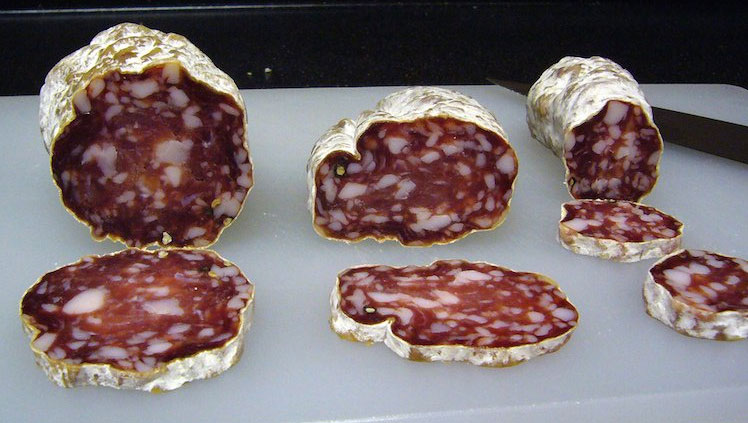Distinguish edible and non-edible mold
Carrots, salami, hard cheeses, even mildew can still be eaten; and jams and jelly must be thrown away.
According to the US Department of Agriculture (USDA), mold is likely to cause allergies and respiratory problems, some of which even lead to poisoning. Bacteria grow with mold that makes moldy foods more susceptible to infection.
However, not all food is moldy and thrown away. Here are the foods that are still edible if moldy and those that are removed are recommended by USDA.
Edible food
Dried salami and salted pork thighs
Dry salami (bulk sausages made from fermented and dried animal meat) and salted pork thighs often have external Penicillium, Aspergillus molds. These types are not harmful to health but otherwise protect food. According to Dr. Wynn Huynh Tran, founder of the nonprofit medical organization VietMD, in general, the types of molds that grow outside salami and salted thighs after removing the mold are safe to eat.
Note: if dry salami and salted thighs appear unpleasant odors, floating brown / black mold or mold inside the meat, you should throw it away.

Salami sausages are protected by a layer of benign mold.(Photo: Flickr / Kent Wang).
Hard fruits and vegetables, low humidity
Mold needs time to grow in fruits and vegetables like carrots, cabbage, bell peppers. You only need to cut at least 3cm around the mold to be used. Clean knives should be washed after cutting to avoid cross-contamination of other foods.
Hard cheeses
Just cut off the mold area to eat normally. Should pack cheese with clean paper.
Fermented cheese
There are many types of fermented cheeses such as Roquefort, Blue, Gorgonzola, Stilton that eat very well. Particularly soft cheeses such as Brie or Camembert do not eat if mold is found. With harder cheeses, put at least 3 cm around the moldy part that is edible.
Food is not edible
Soft fruits with high moisture content
Do not eat cucumbers, peaches or tomatoes once they are moldy.
Bread
Rhizopus stolonifer or black mold on bread and baked goods can make you poisoned or infected.

Bread mold is extremely dangerous.(Photo: Flickr / Manchester Metropolitan University).
Soft, crushed or sliced cheeses
Creamy cheese, Neufchatel, Chevre and Bel Paese are moldy due to infection. Crushed or sliced cheeses if moldy may be caused by unsanitary cutting tools.
Peanut butter, beans and nuts
Foods that do not contain preservatives are susceptible to mold and often produce dangerous toxins.
Jam and jelly
Mycotoxins on jams and jellies can appear even if you have removed moldy parts. So if you have molded, then completely remove the dish.
High moisture food
Ham, cheese, bacon, hot dogs, hot dogs, cooked meats, casseroles, prepared cereals, cooked pasta, yogurt and sour cream, are all susceptible to attack by mold bacteria .
- Mold (Aspergillus) - Doctor of fermentation
- Fossilized pig mold in amber 30 million years
- Chopsticks mold: Assassin causes cancer
- Is it dangerous to eat moldy bread?
- Is mold food safe?
- Bottles can be eaten
- Unexpected character identity in the 18th century portrait
- Food packaging anti-mold
- Russia invents edible product wrapping paper
- Mushrooms in rice and corn make HIV more fertile
- Are moldable foods removed, can you eat away the mold: 3 types of mustard must be thrown away
- With Bake.A.Dish, you do not need to wash dishes after meal
 Soaking vegetables in salt water does not remove chemicals but you should still do it
Soaking vegetables in salt water does not remove chemicals but you should still do it You should limit bamboo shoots if you have 1 in 5 of these diseases
You should limit bamboo shoots if you have 1 in 5 of these diseases Mistakes when soaking vegetables in salt water
Mistakes when soaking vegetables in salt water Risk of death when combining shrimp with vitamin C
Risk of death when combining shrimp with vitamin C